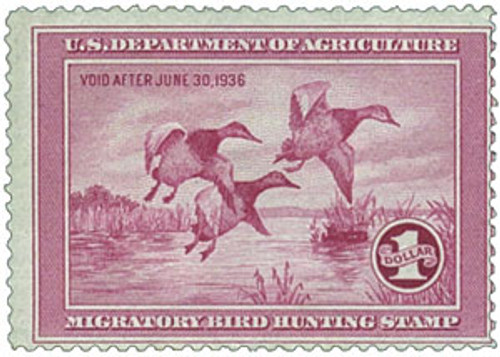
# RW4 - 1937 $1.00 Federal Duck Stamp - Scaup Ducks
1937 $1 Scaup Ducks
Quantity: 783,039
Artist: Joseph D. Knap
Bombay Hook National Wildlife Refuge
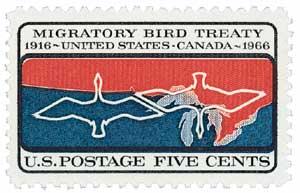
On March 16, 1937, Bombay Hook National Wildlife Refuge was established in Delaware. The refuge projects vital wetlands and salt marshes that serve as important breeding and wintering grounds for hundreds of species of waterfowl and migrating birds.
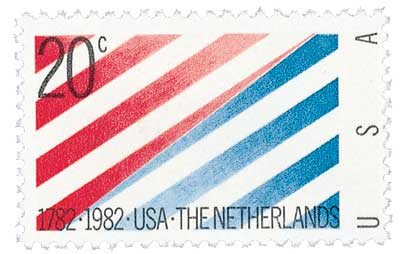
Native Americans of the Kahansink tribe once inhabited the area now known as Bombay Hook. Their ancestors first called the area Canaresse, meaning “at the thickets.” In later years they called it Ruyge-Bosje, which means “shaggy bushes” or “thicket.” By the 1600s, European settlers arrived. Dutch-born Peter Bayard was likely the first European settler, briefly establishing a home there in 1679. Bombay Hook received its current name from Dutch settlers. The Dutch called the area Boomtjes Hoeck, which means tree point, and described the tip of land that extends into the Delaware River.
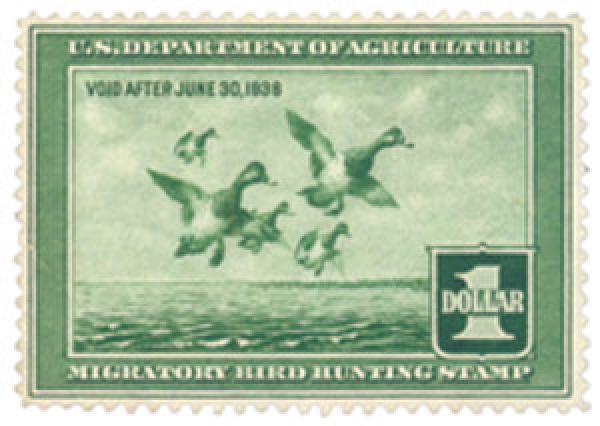
Settlement of Bombay Hook was minimal for some time. The only way to get to Bombay Hook Island was by boat, which likely deterred many from settling there. In the early 1800s, the first bridge connecting Bombay Hook to the mainland was built. With this, settlement and commercial ventures increased on the island and it became a popular resort destination. Over time, several major storms hit the coast, devastating resorts and sand dunes that had once protected the marshes.
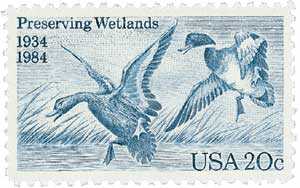
The mid- to late-1800s saw an increased awareness in conservation and preservation of natural resources. In 1903, President Theodore Roosevelt established America’s first wildlife refuge, land set aside solely to protect vulnerable wildlife. The early 1900s also saw the signing of the Migratory Bird Treaty Act, which protected migratory birds traveling between the United States and Canada, and the Migratory Bird Conservation Act, which permitted the establishment of waterfowl refuges. These were all important stepping stones to the passage of the 1934 Migratory Bird Hunting Stamp Act, which provided funds for the purchase of these lands through the sale of Duck stamps.
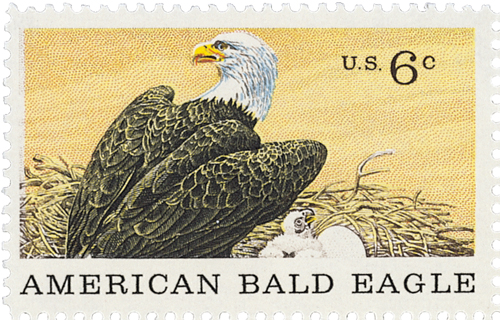
In 1937, these funds were used to purchase 12,000 acres along the Delaware coast to establish the Bombay Hook Migratory Waterfowl Refuge (its name was changed two years later to Bombay Hook National Wildlife Refuge). The park was officially established on March 16, 1937. Bombay Hook’s wetlands and salt marshes had become a prominent breeding and wintering ground for hundreds of species of waterfowl and migrating birds. The refuge provided an important link in the chain of refuges stretching between Canada and the Gulf of Mexico.
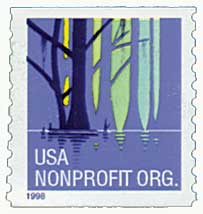
The following year the Civilian Conservation Corps (CCC) arrived and immediately set to work enhancing the refuge for both human and wildlife use. The CCC finished their work in 1942 and left Bombay Hook, shortly before the US Army Air Corps arrived and set up three research projects for World War II. These included a radio direction tower, gunnery range, and aerial rocket studies.
Park operations resumed after the war with additional construction of impoundments and ditches. In 1948 the refuge was honored as the best bird watching site in the region. Between 1961 and ‘64 the park added over 1,300 acres through five separate pieces of land, which were mostly historic family farms. One of the larger single additions came a decade later. In his annual message to Congress in 1974, President Gerald Ford recommended that Bombay Hook add another 2,000 acres as part of the National Wilderness System. His plan was approved early the following year, creating the Bombay Hook Wilderness. The final addition to the refuge’s property came in 1993 when it acquired the steamboat landing.
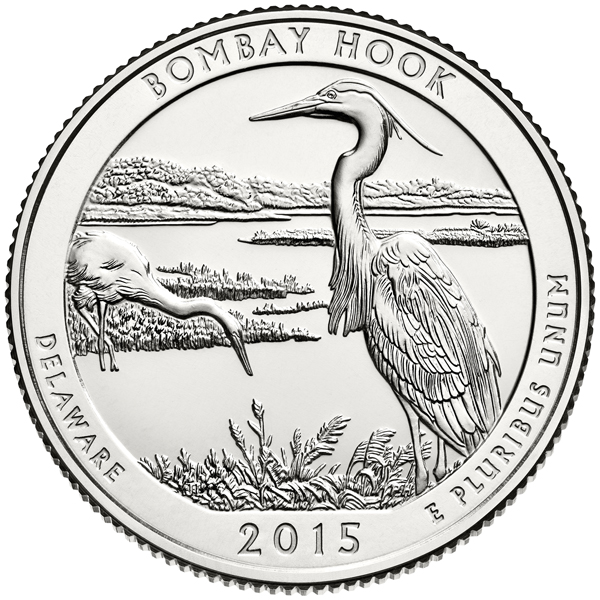 |
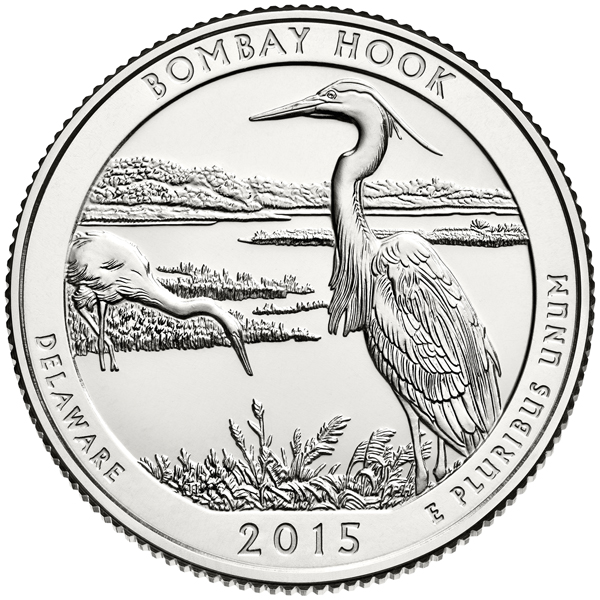 |
1937 $1 Scaup Ducks
Quantity: 783,039
Artist: Joseph D. Knap
Bombay Hook National Wildlife Refuge

On March 16, 1937, Bombay Hook National Wildlife Refuge was established in Delaware. The refuge projects vital wetlands and salt marshes that serve as important breeding and wintering grounds for hundreds of species of waterfowl and migrating birds.

Native Americans of the Kahansink tribe once inhabited the area now known as Bombay Hook. Their ancestors first called the area Canaresse, meaning “at the thickets.” In later years they called it Ruyge-Bosje, which means “shaggy bushes” or “thicket.” By the 1600s, European settlers arrived. Dutch-born Peter Bayard was likely the first European settler, briefly establishing a home there in 1679. Bombay Hook received its current name from Dutch settlers. The Dutch called the area Boomtjes Hoeck, which means tree point, and described the tip of land that extends into the Delaware River.

Settlement of Bombay Hook was minimal for some time. The only way to get to Bombay Hook Island was by boat, which likely deterred many from settling there. In the early 1800s, the first bridge connecting Bombay Hook to the mainland was built. With this, settlement and commercial ventures increased on the island and it became a popular resort destination. Over time, several major storms hit the coast, devastating resorts and sand dunes that had once protected the marshes.

The mid- to late-1800s saw an increased awareness in conservation and preservation of natural resources. In 1903, President Theodore Roosevelt established America’s first wildlife refuge, land set aside solely to protect vulnerable wildlife. The early 1900s also saw the signing of the Migratory Bird Treaty Act, which protected migratory birds traveling between the United States and Canada, and the Migratory Bird Conservation Act, which permitted the establishment of waterfowl refuges. These were all important stepping stones to the passage of the 1934 Migratory Bird Hunting Stamp Act, which provided funds for the purchase of these lands through the sale of Duck stamps.

In 1937, these funds were used to purchase 12,000 acres along the Delaware coast to establish the Bombay Hook Migratory Waterfowl Refuge (its name was changed two years later to Bombay Hook National Wildlife Refuge). The park was officially established on March 16, 1937. Bombay Hook’s wetlands and salt marshes had become a prominent breeding and wintering ground for hundreds of species of waterfowl and migrating birds. The refuge provided an important link in the chain of refuges stretching between Canada and the Gulf of Mexico.

The following year the Civilian Conservation Corps (CCC) arrived and immediately set to work enhancing the refuge for both human and wildlife use. The CCC finished their work in 1942 and left Bombay Hook, shortly before the US Army Air Corps arrived and set up three research projects for World War II. These included a radio direction tower, gunnery range, and aerial rocket studies.
Park operations resumed after the war with additional construction of impoundments and ditches. In 1948 the refuge was honored as the best bird watching site in the region. Between 1961 and ‘64 the park added over 1,300 acres through five separate pieces of land, which were mostly historic family farms. One of the larger single additions came a decade later. In his annual message to Congress in 1974, President Gerald Ford recommended that Bombay Hook add another 2,000 acres as part of the National Wilderness System. His plan was approved early the following year, creating the Bombay Hook Wilderness. The final addition to the refuge’s property came in 1993 when it acquired the steamboat landing.
 |
 |







